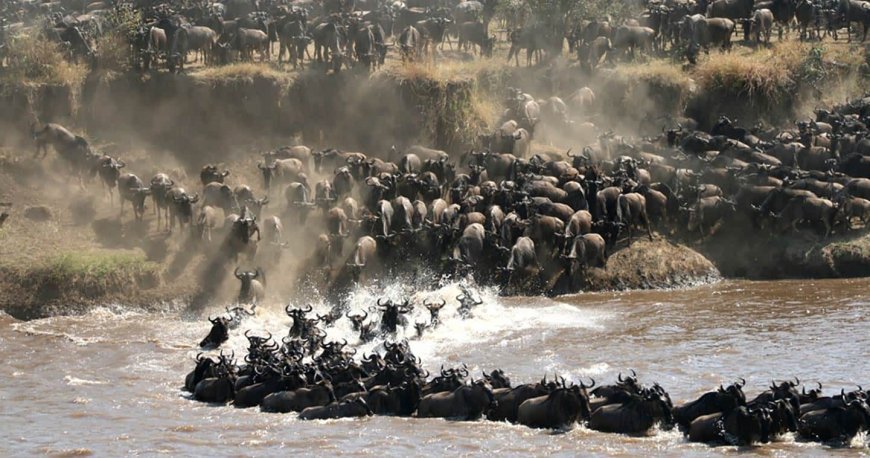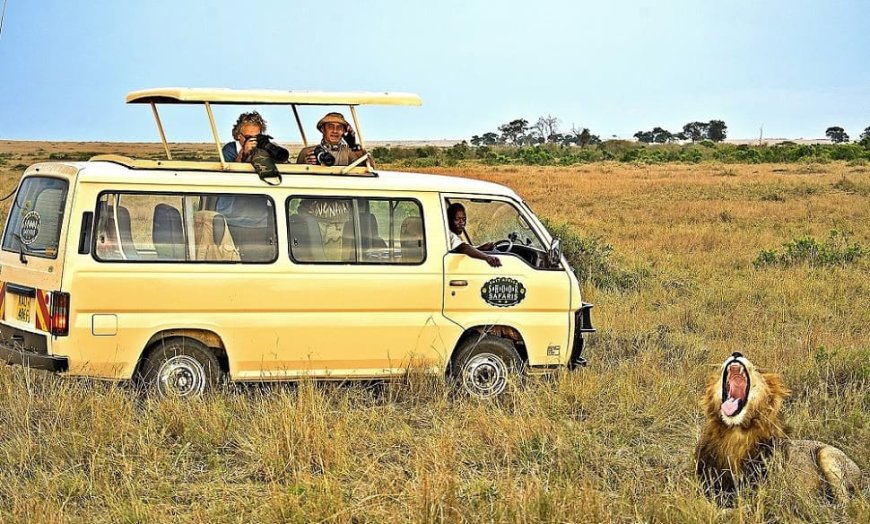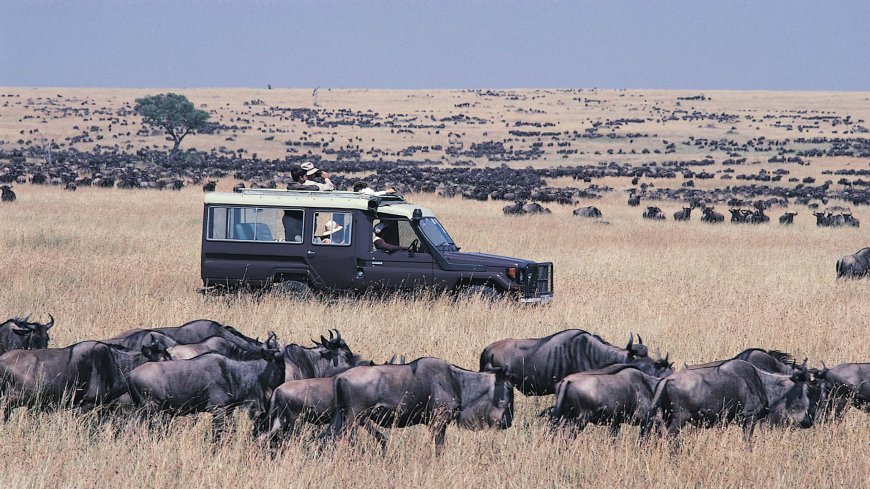Maasai Mara Gets One-Of-A-Kind Global Recognition
The spectacle attracts millions of tourists from across the globe, who flock to witness what’s widely regarded as one of the natural wonders of the world.

The Maasai Mara National Reserve has officially earned a spot in the World Book of Records for hosting the largest annual land-based wildlife migration on Earth.
This iconic migration sees millions of wildebeest, zebras, and gazelles move between Kenya’s Maasai Mara and Tanzania’s Serengeti, mainly during the rainy season, as they search for fresh pasture and water.
The spectacle attracts millions of tourists from across the globe, who flock to witness what’s widely regarded as one of the natural wonders of the world.
In an official letter to Narok Governor Patrick Ole Ntuntu, World Book of Records President Santosh Shukla described the event through a title that reads World’s Greatest Annual Terrestrial Wildlife Migration.

Tourists during a game drive at Maasai Mara. /MAASAI MARA NATIONAL RESERVE
“We are delighted to inform you that the Maasai Mara National Reserve has been officially included in World Book of Records under the distinguished title: ‘World’s Greatest Annual Terrestrial Wildlife Migration’ for hosting the largest and most dramatic annual land animal migration on Earth, involving over 1.5 million wildebeests, zebras, and antelopes traversing the Serengeti-Mara ecosystem," the letter read.
"To commemorate this prestigious inclusion, we would be honoured to present the official World Record Certificate at the campus of Maasai Mara National Reserve. We request your kind confirmation for a suitable date and time for this presentation ceremony. Our official representatives would be pleased to coordinate and visit the reserve for this special occasion."
Shukla noted that the remarkable recognition honours the ecological significance of the Maasai Mara and highlights Kenya’s exceptional contribution to wildlife conservation, global biodiversity, and sustainable eco-tourism.
Ole Ntuntu, reacting to the news, hailed the recognition as the fruits being born from the hard work his administration has put into the world-famous national reserve.
“Upon assuming office two and a half years ago, my administration launched an ambitious campaign to restructure and revitalise the Maasai Mara National Reserve, with the objective of preserving and enhancing this invaluable natural asset," he said.
Ntuntu highlighted a range of reforms aimed at reviving the Maasai Mara’s ecosystem and reinforcing its global reputation. These measures include the implementation of the Maasai Mara National Reserve Management Plans, better equipping rangers, improving road infrastructure within the reserve, and adopting technology-driven conservation strategies.
He described the international recognition as a significant achievement for both Narok County and Kenya as a whole, celebrating the World Book of Records certification that officially acknowledges the Maasai Mara as the site of the world’s largest annual land-based wildlife migration.
What Is The Maasai Mara?
The Maasai Mara National Reserve is a world-renowned wildlife conservation area located in southwestern Kenya, within Narok County.
Covering roughly 1,510 square kilometres, the reserve forms part of the greater Mara-Serengeti ecosystem, sharing its southern border with Tanzania’s Serengeti National Park. Named after the Maasai people who inhabit the region and the Mara River that flows through it, the reserve is one of Africa’s most iconic safari destinations.
The Maasai Mara is best known for its incredible biodiversity and rich concentration of wildlife. It is home to the “Big Five” — lions, leopards, elephants, rhinos, and buffalo — as well as countless other species, including cheetahs, hyenas, giraffes, and hippos. Birdlife is also abundant, with hundreds of species recorded across the reserve.
However, the reserve’s most famous attraction is the annual Great Migration, when millions of wildebeest, zebras, and gazelles cross the plains in search of greener pastures. This migration, which involves perilous river crossings and predator encounters, has earned global recognition as one of the natural wonders of the world.
Beyond its ecological significance, the Maasai Mara plays a critical role in Kenya’s tourism industry. It attracts visitors from across the globe, contributing significantly to the local and national economy. Conservation efforts within the reserve focus on protecting its delicate ecosystems, supporting community-based initiatives, and employing modern technologies to manage wildlife and combat poaching.
In essence, the Maasai Mara National Reserve is not just a hub of wildlife tourism — it is a symbol of Kenya’s natural heritage and a global icon for biodiversity conservation.







